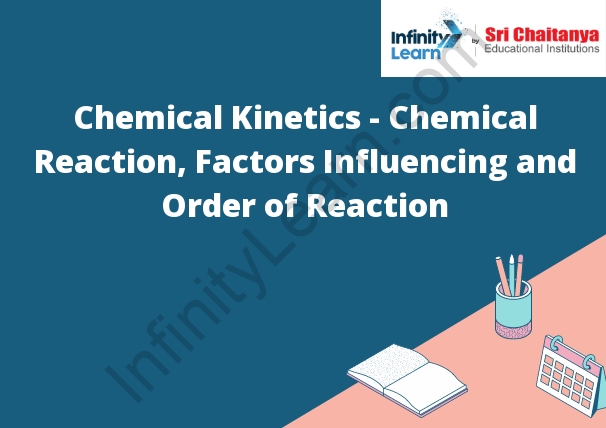Table of Contents
What is Chemical Kinetics?
Chemical Kinetics:
Chemical Kinetics is the study of the rates at which chemical reactions occur and the factors that affect these rates. Kinetics can be used to predict how a reaction will progress over time, and can be used to optimize reaction conditions for specific purposes.

Collision
- detection is a technique used in 3D computer graphics to determine whether two objects in a scene are intersecting. It is used to prevent objects from passing through each other, and to determine when two objects are about to collide.
- There are a number of different techniques for performing collision detection, but all of them involve determining whether the two objects are intersecting and then calculating the extent of the intersection. Some methods are based on bounding volumes, while others use more sophisticated algorithms such as the Separating Axis Theorem.
Rate of a Chemical Reaction
The rate of a chemical reaction is the speed at which the reactants are converted into products. The rate of a reaction can be affected by many factors, including the concentration of the reactants, the temperature, the presence of a catalyst, and the surface area of the reactants. The rate of a reaction can be measured experimentally by determining the amount of product that is produced over a given period of time.
Factors Influencing the Rate of Reaction
There are a number of factors that can influence the rate of reaction. The most important factors are concentration, temperature, and surface area.
Concentration
The concentration of the reactants affects the rate of reaction. The higher the concentration of reactants, the faster the reaction will occur.
Temperature
The temperature of the reactants affects the rate of reaction. The higher the temperature, the faster the reaction will occur.
Surface Area
The surface area of the reactants affects the rate of reaction. The greater the surface area, the faster the reaction will occur.
The Nature of the Reactants
The reactants in this reaction are a metal and a nonmetal. The metal is aluminum and the nonmetal is oxygen.
The Concentration of the Reactants
The concentration of the reactants is important because it affects the rate of the reaction. The more concentrated the reactants are, the faster the reaction will be.
The Temperature of the Reactants
The temperature of the reactants is important because it can affect the rate of the reaction. The higher the temperature, the faster the reaction will happen.
The Presence of a Catalyst
- A catalyst is a substance that is not consumed in a chemical reaction and that speeds up the rate of a reaction without itself being changed.
- In the presence of a catalyst, the activation energy of a reaction is lowered, meaning that the reaction can take place at a lower temperature.
- Catalysts can also increase the rate of a reaction by increasing the number of collisions between the reactants.
How to Find Order of Reaction?
There is no definitive answer to this question as the order of reaction can vary depending on the experimental conditions. However, some methods that can be used to determine the order of reaction include looking at the rate of reaction as a function of reactant concentration, using a graphical method such as a Lineweaver-Burk plot, or using a mathematical model to analyze the data.
Following Methods can be Used for Determination of Order of Reaction
- The order of a reaction can be determined experimentally by measuring the change in concentration of one of the reactants as a function of time. The order with respect to that reactant is the order of the reaction.
- The order of a reaction can also be determined from the rate law. The order of a reaction is the exponent in the rate law.
Molecularity of a Reaction
The molecularity of a reaction is the number of molecules of reactants that collide and react in a single step of the overall reaction. The molecularity of a reaction can be determined experimentally by using a technique called kinetic analysis.
Zero Order Reaction
A zero order reaction is a chemical reaction in which the concentration of the reactant does not change with time. The reaction rate is constant.









